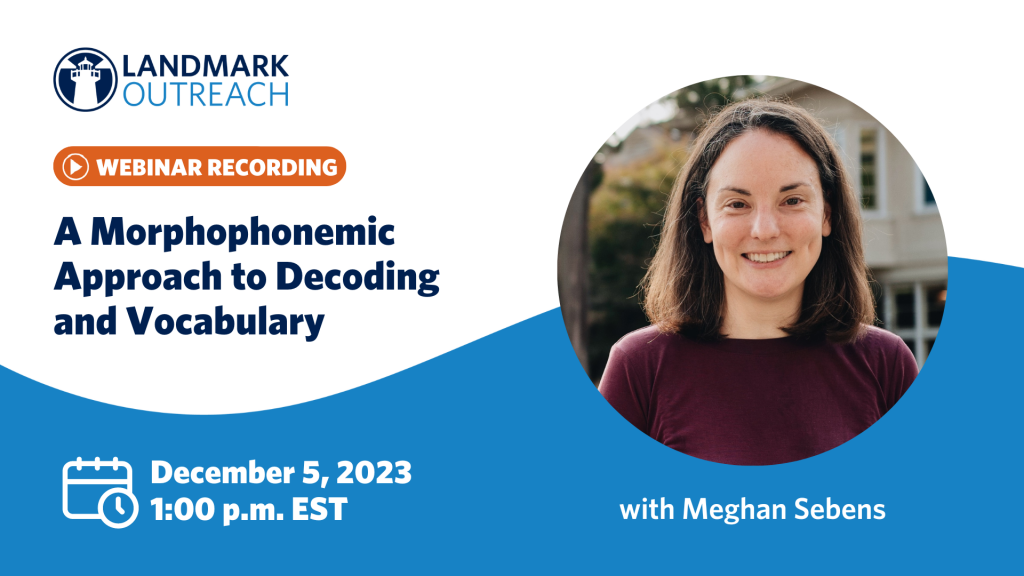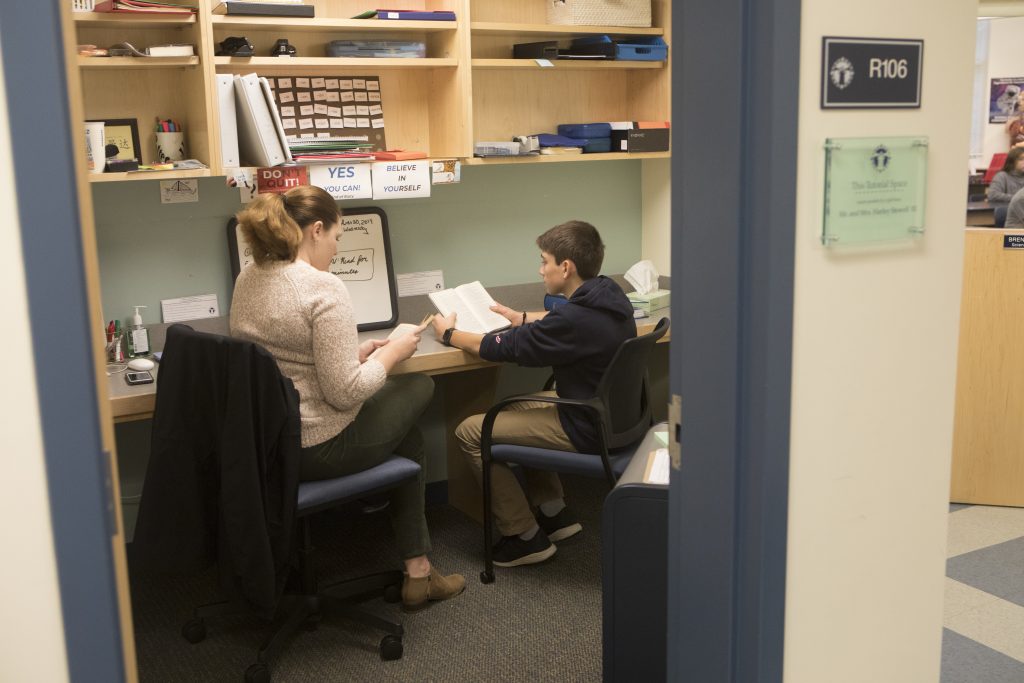Though many of us can read text fluently, few of us think about what it entails or means to do so. When I started studying and teaching reading over 20 years ago, I encountered different definitions of reading fluency. By some accounts, fluency is thought of as the ability to read aloud with appropriate and varied intonation, perhaps giving distinct voices to different characters. Elsewhere, fluency is equated with reading speed, how fast one can read words aloud or silently.
The definition that has shaped my view of reading fluency and much of my subsequent work comes largely from my PhD mentor, Dr. Maryanne Wolf. According to her, fluency (or “fluent comprehension”) is when each of the component parts of text reading (e.g., phonological, motoric, morphological, syntactic, orthographic processes), are not just accurate, but automatic, allowing maximal time and cognitive resources to be devoted to comprehending and engaging with text. This definition resonates with me for multiple reasons: it recognizes the many component parts of fluency, it emphasizes the importance of automaticity, and it focuses on the central goal of reading. It also sets the stage for us as researchers to test ideas about what makes some readers more or less fluent, what must happen in the brain to support fluent comprehension, and how we can help children who are struggling reach this state.
This type or level of reading, when everything works in concert, has been described like an orchestra playing in perfect synchronous harmony. There are many processes which young or struggling readers find effortful, such as identifying the sounds in spoken language (phonological awareness), matching sounds with printed counterparts (phonics), or identifying frequent and meaningful parts of multisyllabic words (morphological and orthographic knowledge). Very skilled readers have not only mastered each of these – but achieved automaticity, so that these processes happen accurately and quickly, with little conscious effort.
When a skilled pianist deftly plays a familiar song, she doesn’t need to focus on where her hands sit on the keyboard, which fingers hit the keys for a chord, or how long to hold a note, as these things come naturally, automatically. The automaticity of these lower-level components allows a skilled musician the luxury of time and space to add their own embellishments, to deeply feel the emotion of the piece, and to coordinate with fellow players. In contrast, my childhood piano lessons felt nothing like this. I stumbled over the ways my hands needed to shape to reach a chord, and I had to pause to remember which key corresponded to a given note on the staff. Playing “When the Saints Go Marching In” for the dozenth time felt nothing like the joyous expression that song can take on in the hands of a New Orleans-style brass band. I was far from “fluent,” and I can say, it was not much fun.
With this encompassing understanding of reading fluency, we can consider how to help readers achieve fluent comprehension. Having automaticity, the natural ease that comes from solid accuracy and speed, is what we want for all readers, to enable fluency. However, as has been established, it can be notoriously difficult to achieve, and to predict (though rapid automatized naming or RAN is our best screening tool – we have a paper designed for teachers and a meta-analysis that discuss this). There is ample evidence-based research to inform our understanding of how to intervene to improve children’s phonemic awareness, phonics, and spoken language comprehension, all of which are crucial to reading and thus underlie fluency. Yet, how to help readers move from accuracy, or even accuracy with some speed (efficiency), to true fluency is difficult and less studied.
When I was a teacher at Landmark, I faced this question in very real terms. How could I help a high school-age student make the bridge from accurate reading to fluent reading, which would afford more opportunities for them to connect with the text, link to their background knowledge, predict what was coming next, and all the other things that we know skilled readers do? One major strategy in the field, especially for middle school-age and older readers, is repeated reading. Repeated reading is reading the same passage repeatedly; this contrasts with broad reading (also called continuous reading) – that is, reading varied text that is not repeated. Given the vast complexity of fluent comprehension, it always felt a bit puzzling to me that something so straightforward as re-reading the same text could help struggling readers.
Though I have gone on to become a professor and researcher, this question from my days at Landmark stuck with me. Thus, I wrote a brief review in 2024 of the evidence for whether repeated reading is better than broad reading for enhancing fluency and comprehension when a reader encounters new text. In two (small but crucially well-controlled) studies, there was no evidence that repeated reading helped students read new text passages more quickly or with better comprehension, compared with the same amount of varied (broad) text reading. Crucially, one of these studies (Hammerschmidt‐Snidarich et al., 2019) indicated that school-age readers preferred broad to repeated reading. When all else is equal, I would pick the approach that would keep my student engaged in the lesson. (Similarly, I would rather listen to a whole album than the same song repeated!)
Knowing that repeated reading might not be the ideal strategy, what can we do to support fluent comprehension? There is no one silver bullet or one-size-fits-all solution. Said briefly, it takes a deep understanding and consideration of all the component parts of reading and explicit instruction about what it means to be a fluent reader. There are insights from neuroscience studies that can tell us more; that’s another blog or paper. As we all work to help support children’s reading, I reflect on a Taylor Swift lyric (as I often do): “Dear reader, The greatest of luxuries is…” fluent comprehension.
Acknowledgments: Thank you to Amelia Murray for comments on a draft of this post. Norton’s work is supported by Northwestern University and NIH/the National Institute on Deafness and Communication Disorders (NIDCD).
References:
Hammerschmidt‐Snidarich, S., Maki, K., & Adams, S. (2019). Evaluating the effects of repeated reading and continuous reading using a standardized dosage of words read. Psychology in the Schools, 56(5), 635-651.
McWeeny, S., Choi, S. J., LaTourette, A., Choe, J., Roberts, M. Y., & Norton, E. S. (2022). Rapid automatized naming as a kindergarten predictor of future reading in English: A systematic review and meta-analysis. Reading Research Quarterly, 57(4), 1187-1211.
Norton, E. S. (2024). Practice doesn’t make perfect: Repeated reading is no more effective than continuous reading for improving fluency and comprehension in school-age struggling readers. The Reading League Journal, Jan/Feb 2024, 45-49.
Norton, E. S. (2020). What educators need to know about rapid automatized naming (RAN). Learning Difficulties Australia Bulletin, 52(1), 25-28.
Norton, E. S., Beach, S. D., Eddy, M., McWeeny, S., Ozernov-Palchik, O., Gaab, N., & Gabrieli, J. (2021). ERP mismatch negativity amplitude and asymmetry reflect phonological and rapid automatized naming skills in English-speaking kindergartners. Frontiers in Human Neuroscience, 15.
Norton, E. S., & Wolf, M. (2012). Rapid automatized naming (RAN) and reading fluency: Implications for understanding and treatment of reading disabilities. Annual Review of Psychology, 63, 427-452.



